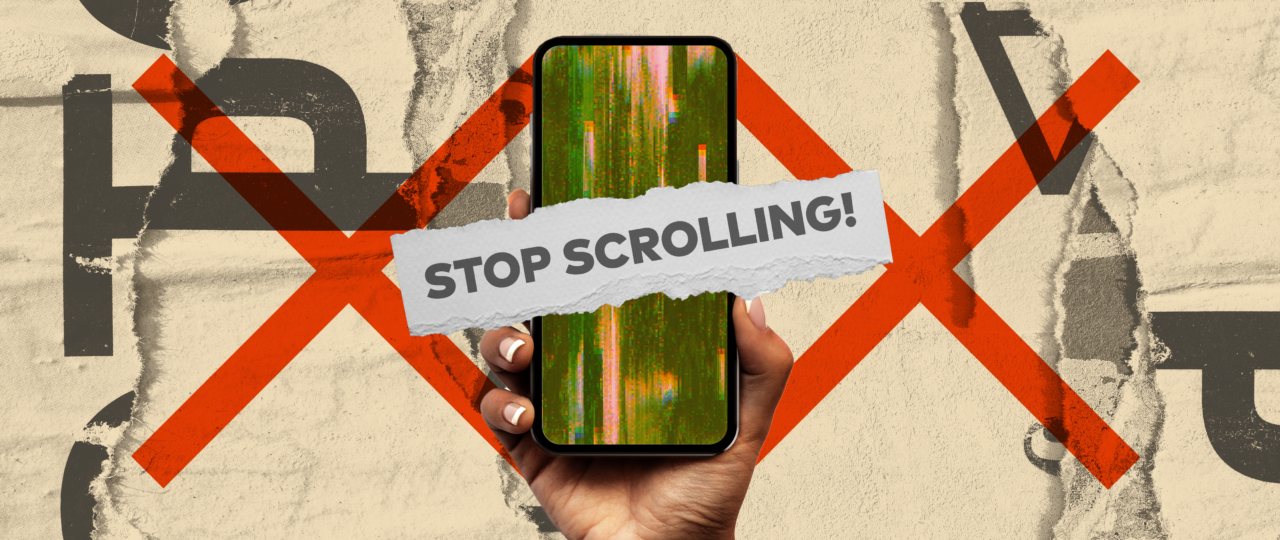Watching Anderson Cooper and Andy Cohen get progressively more shitfaced is one of my favorite New Year’s Eve traditions. Whether I’m at a crowded bar or sick in bed nursing a sinus infection, I will inevitably find a way to get CNN streaming live to the nearest television. This year had plenty of highlights (now that the daddies have their juice again), perhaps most notably sweeping headlines when Andy called Anderson a “pass around party bottom.”
But despite a few knockout moments and the triumphant return of alcohol on air, the hosts remained relatively behaved this year. After the ball dropped, Andy acknowledged it himself, stating, “This is usually when I do my ‘I hate the mayor’ speech…” but a pleading Anderson held him back. Instead they spoke of New Year’s resolutions, and both men shared a core desire for 2024: less phone usage.
Minimizing screen time is a constant quest these days, and an especially common theme every New Year. Many people choose to get off social media entirely for January (or really any month throughout the year) and it becomes a prideful badge to whip out at parties. “I deleted TikTok last month and I’m so much happier.” “Instagram has become so negative; I’ve read three books since I quit.” It’s like AA for doomscrolling.
The problem is this: habits almost always revert once the app gets reinstalled, the account gets reactivated, and the scrolling resumes. Like dieting, cold-turkey restriction may shed some pounds in the short-term, but in the end you’ll gain the weight back and an eating disorder to match. It doesn’t work.
So for those of us genuinely trying to be more mindful with our scrolling, what do we do? Utilize our phone’s screen time notification setting that we simply swipe away and ignore? Not likely.
Hold on, one sec.
I received ads for an app called one sec for most of 2023. Its claim? “Distracting apps made less appealing.”
The concept is relatively simple. You download the app, then pair it with whatever app on which you want to limit your usage. The next time you try to open that app, you’re forced to wait 15 seconds. This is the mindful “intervention” before you can choose whether or not you actually want to continue to the app in question. They tout this as a science-based approach:
“Our social media habits are the outcome of psychological mechanisms that apps trigger in our brains. They use the system of instant gratification which releases dopamine whenever we perceive a like or a message on our phone.
one sec’s approach is to break those habits. By making you wait longer for social media to open, your brain loses interest in those (destructive) short-term dopamine hits.”
I was intrigued, but hesitant for a long time. It was finally after spending an entire day in early October glued to my phone, raising my own blood pressure at the amount of political misinformation being spread, that I knew something had to change. one sec was downloaded. Instagram was effectively blocked.
Perhaps the most ingenious feature of one sec is that when you go to open whatever distracting app you’ve paired it with, it tells you how many times you’ve tried to open it in the past 24 hours. Nothing will set you straight faster.
That first week I downloaded it, I was being told I had attempted to open Instagram upwards of 30 times in the past 24 hours. Most striking was a moment I experienced in my dentist’s waiting room: I went to open Instagram; it made me wait. Immediately annoyed, I closed it. No less than 30 seconds later, I tried again. My thumb instinctively reached for that little pink icon despite knowing the outcome. Even more annoyed, I closed it again. I ended up staring at my dentist’s unsettling artwork instead, forced to face reality.
Now, I’m someone who considers herself fairly lax on social media (especially for someone who works in social media marketing). I don’t have TikTok, I don’t have push notifications turned on for Instagram, and I post rarely. Suffice to say, I was genuinely shocked by the numbers and behaviors I was seeing with one sec installed.
But baby, it works.
One month into usage, I opened the app to see this:

Two months:
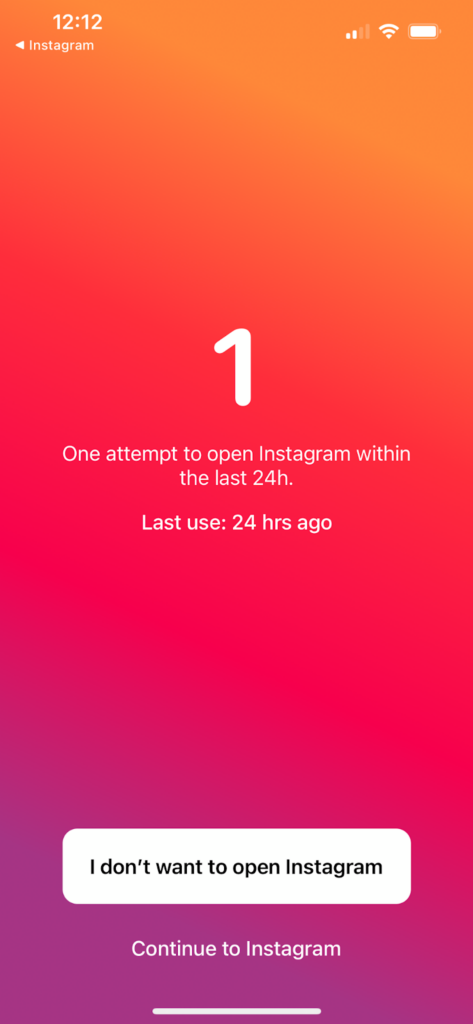
I have yet to receive the coveted “0 attempts,” and in reality my average tends to actually sit around 5-10 attempts daily. It feels like a prize anytime I open it to an extremely low number, because it means the app is doing its job. It’s changed my habits. My goal isn’t and never has been to swear off social media entirely, but to simply use it more mindfully.
“If configured, one sec forces you to set an intention for opening apps. By thinking about your planned actions in the app beforehand, you will spend less time doing anything else.”
one sec website
I no longer automatically reach for Instagram when I’m bored. I don’t worry I’m missing some crucial piece of knowledge. I don’t wake up and immediately have the most heartbreaking headlines imaginable seared into my brain. Now, I can use my phone intentionally. I can smile at a meme from my friend then close the app just as quickly. I can seek resources during an appropriately allotted part of my day when I’m mentally prepared to engage. I can live again.
(It’s significant to note that I’m not advocating for tuning out current events—that would be a terribly privileged perspective. But being more conscious of your consumption is key.)
There are other fun little features as well. You can set a morning or evening journal that pops up before the breathing exercise (the standard intervention, shown in the video above), so you have to write at least 25 words before you can proceed (this is what finally broke my habit of looking at Instagram first thing in the morning—sometimes I was willing to wait 15 seconds, I was never willing to journal). In the paid version, you can choose multiple different kinds of interventions beyond this, and so much more. (In the paid version you can also configure one sec with multiple apps, or even apply a browser extension. The free version only allows it to pair with one, which works fine for me and my TikTok-free lifestyle.)
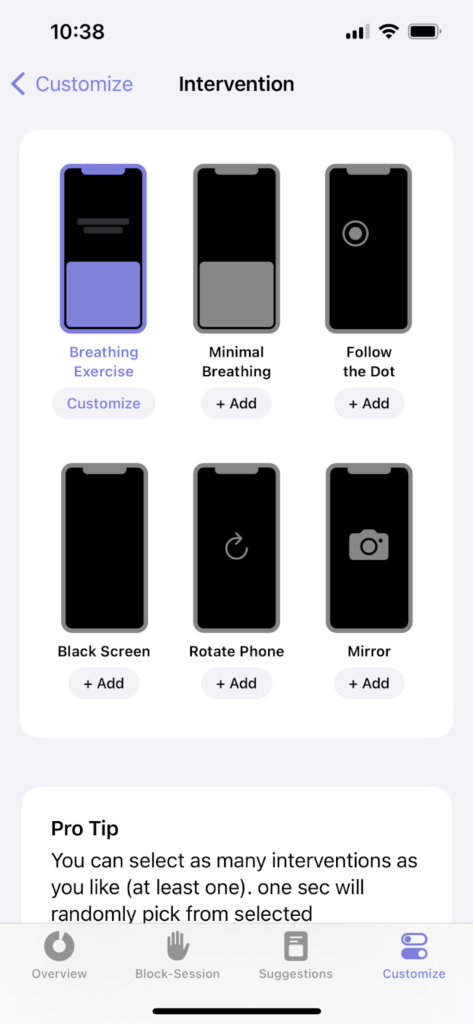

According to one sec, it has saved me more than 56 hours (or 2.4 days) since I downloaded it. It claims that within a full year, it will save me a total of 1.1 weeks. I don’t know where it’s getting these numbers from—if it’s a random estimation or if it’s pulling data from my phone about my average screen time. Honestly, I don’t care. I’ll take those numbers with a grain of salt, because one sec has gone above and beyond my expectations, and I’ll never go back.
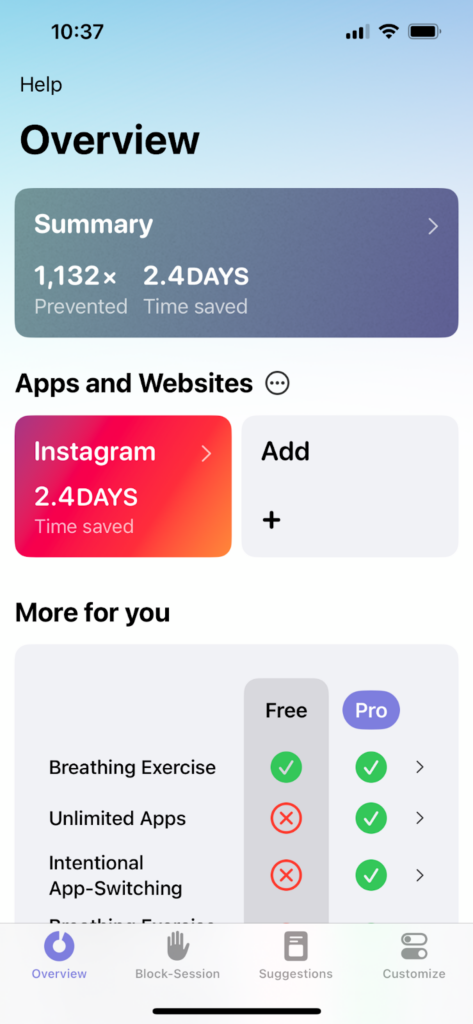
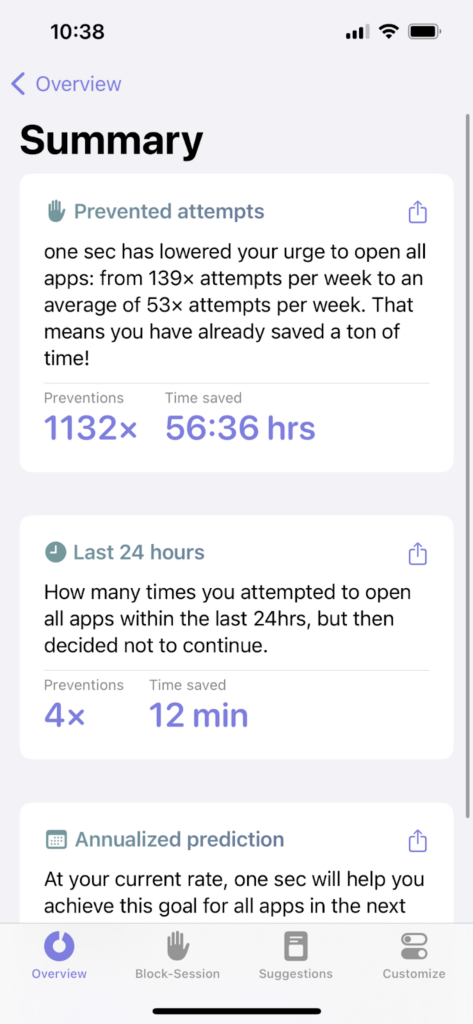
I’ll also never shut up about it. I’ve convinced multiple friends to download the app, and I simply love going to parties and talking about how I’ve only tried to open Instagram three times so far today. (And yes, I’ve also finished about five books since getting it.)
So this year, before you decide to swear off social media entirely, only to return the same as ever in two months, consider changing your habits for good with one sec. The CNN gays will surely applaud you for it.
